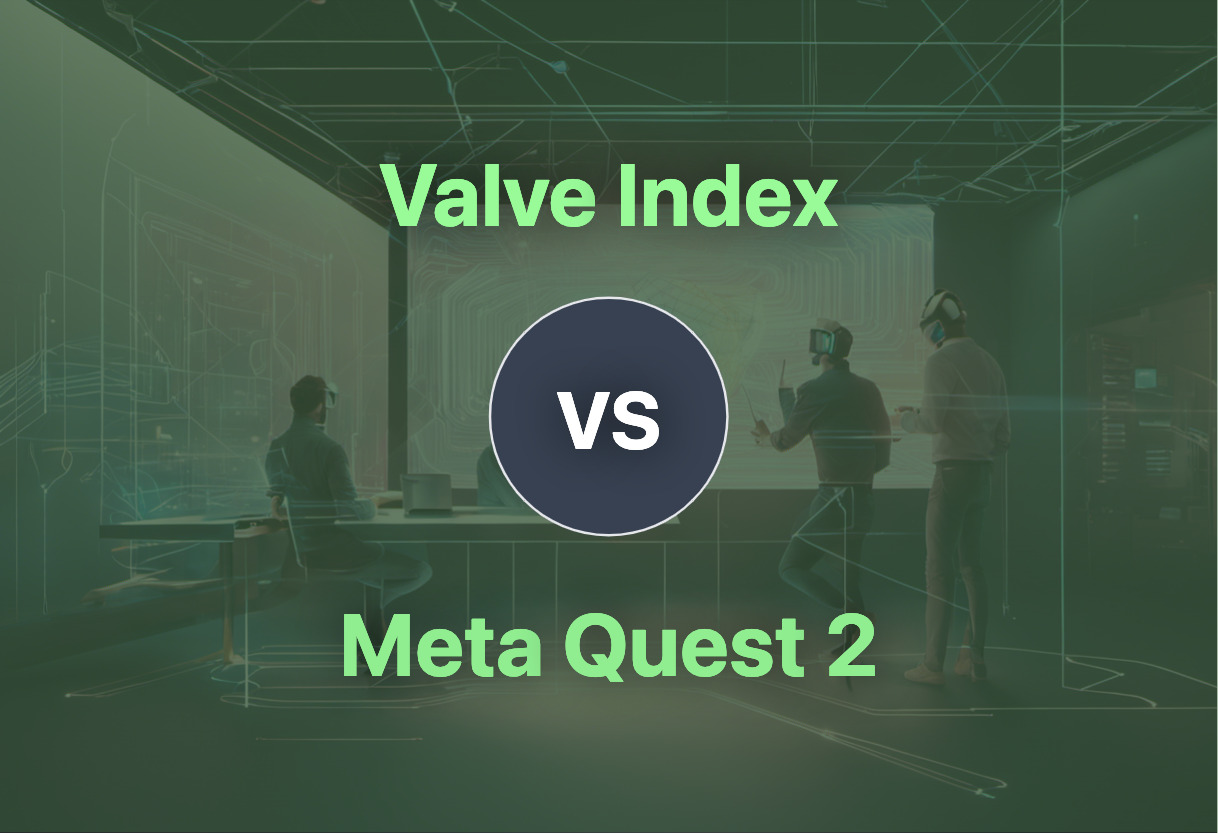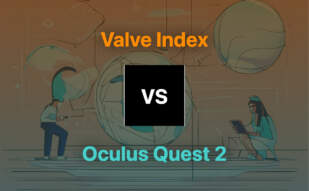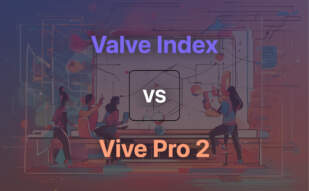For those looking for superior optics, enhanced audio, and relentless performance, the Valve Index reigns supreme. However, for a more economical yet immersive VR experience with excellent content availability, the Meta Quest 2 stands as a competitive choice.

Key Differences Between Valve Index and Meta Quest 2
- Price: The Valve Index comes at a steeper cost, starting from $799, while the Meta Quest 2 starts at an affordable $399.
- Optics: Valve Index employs higher resolution dual 1440 x 1600 RGB LCD displays, offering superior sharpness. Conversely, Meta Quest 2 works on higher refresh rates (120Hz), promising smoother visuals.
- Tracking: Valve Index utilizes the SteamVR 2.0 sensors with base stations, whereas Meta Quest 2 uses integrated position-tracking cameras and internal sensors.
- Operating System: Valve Index is compatible with Windows and Linux, whereas Meta Quest 2 operates on its in-headset menu system.
- Controllers: Valve Index features an intricate controller tracking system with 87 sensors, while Meta Quest 2 boasts a more basic, yet effective, motion tracking system.
| Comparison | Valve Index | Meta Quest 2 |
|---|---|---|
| Manufacturer | Valve | Meta Platforms Inc. |
| Initial Release | June 28, 2019 | Fall 2023 for Quest 3 |
| Operating System | Windows, Linux | Android, iOS required for Smart Glasses |
| Price (at Launch) | $999 (Full Kit) | $399 (128GB Model) |
| Display | Dual 1440 x 1600 RGB LCDs | 1,920-by-1,832 pixels per eye (Quest 2) |
| Frame Rates | 80/90/120/144Hz | Supports 120Hz |
| Tracking | SteamVR 2.0 sensors, compatible with SteamVR 1.0 and 2.0 base stations | Four cameras for position + internal sensors for orientation |
| Controllers | 87 sensors tracking hand and finger positions; joystick, touchpad, two face buttons, a menu button, and trigger | Two motion controllers improved from Original Oculus Touch controllers |
| Connectivity | USB 3.0, DisplayPort 1.2, 12V power | Optional PC tethering with accessory cable |
| Compatibility with Existing Software | Compatible with Steam, hardware agnostic | Compatible with YouTube VR, Quest 2 backwards compatible with Quest 2 catalog of 500+ VR games, apps, experiences |
What Is Valve Index and Who’s It For?
Valve Index is a second-generation VR headset by Valve, designed for immersive technology enthusiasts seeking superior VR experiences. It targets high-end consumers who value quality visuals, performance, and customization on Windows and Linux systems.

Pros of Valve Index
- High resolution displays for enhanced sharpness.
- Improved frame rates for optical comfort.
- Pioneering off-ear audio solution.
- High customizability, from FOV to ergonomics.
Cons of Valve Index
- Lacks eye tracking.
- Substantial price tag.
- Complicated room-scale sensor setup.
- May have redundant controllers for certain games.
What Is Meta Quest 2 and Who’s It For?
The Meta Quest 2 is a cutting-edge VR/AR headset developed by Meta Platforms Inc. A perfect match for tech-savvy consumers and gamers aged 10 and above, it provides an impressive upgrade to its predecessor, the Original Quest.

Pros of Meta Quest 2
- Lighter design with higher performance.
- Upgraded processors and display resolution.
- Vast catalog of VR games and experiences.
- Option for PC tethering.
Cons of Meta Quest 2
- Involves Facebook Integration.
- Limited battery life of 2-3 hours.
- Limited scope for headset adjustability.
- Additional cost for optional accessories.
Valve Index or Meta Quest 2: Which Should Be Your Pick?
In the current VR race, there are two main contenders: Valve Index and Meta Quest 2. Armed with superior qualities, each one exhibits unique strengths. The choice comes down to your specific needs and personal preferences.
For High-End Gaming Enthusiasts
Valve Index triumphs in the gaming realm, providing a rich, unrivaled VR experience. Its high refresh rate, enviable clarity, and adjustable optics, make for longer gaming sessions. Thecustomizable controllers with 87 sensors promise precision in gaming. However, it bears a heavier price tag, which could be a deterrent for some.

Developers and Creators
Meta Quest 2, with its sleek design and powerful Snapdragon XR2 processor, calls out to developers. The device is lighter and sports an improved display. What makes it more appealing is the extensive access to VR games and experiences, along with the option for PC tethering for advanced VR experience.

Budget-Cautious Buyers
Meta Quest 2 is undoubtedly more budget-friendly, despite its high-end features. It offers improved storage & performance options at a lower price. However, it falls short with its limited battery life and less adjustability than Valve Index.

For Tech Enthusiasts
Valve Index’s ability to adjust the optics and ergonomics is preferable for tech enthusiasts desiring customization. The increased FOV offers a better, more immersive user experience. On the contrary, Meta Quest 2’slimited customizability might disappoint this audience.

If your aim is an unparalleled, customizable VR experience and budget is not a hurdle, Valve Index proves to be the superior choice. However, if you seek high performance paired with affordability and accessibility, Meta Quest 2 gets the edge.
Hannah Stewart
Content writer @ Aircada, tech enthusiast, metaverse explorer, and coffee addict. Weaving stories in digital realms.





